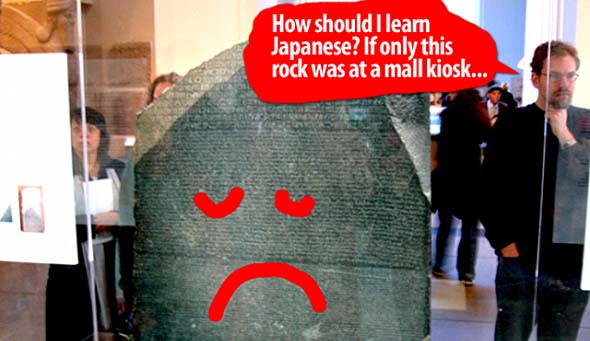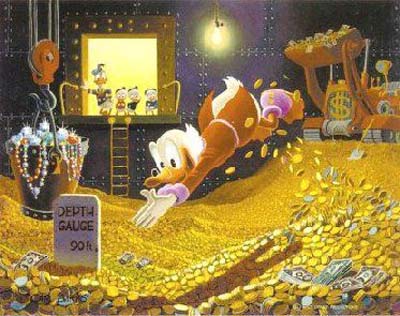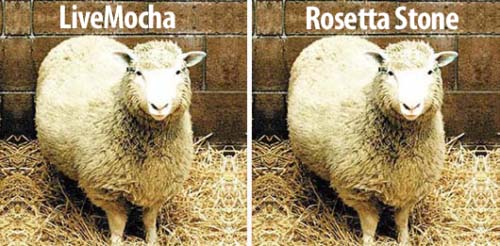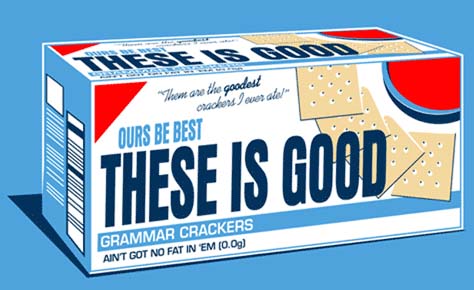
One of the most common e-mail questions I get is “Should I buy Rosetta Stone Japanese?” It’s time to put an end to this e-mail silliness. From now on, I get to link to this post and video. Hopefully you, whoever “you” are (tell me in the comments), can get something out of this post as well.
P.S. Want even more Japanese language resources? Check out Tofugu’s Japanese Resources Page!
Here’s the itinerary:
- Should I buy Rosetta Stone Japanese?
- What makes Rosetta Stone “good”?
- Alternatives to Rosetta Stone Japanese
- Getting Your Opinion
Should I buy Rosetta Stone Japanese?
The nice and quick answer would be a nice and quick “no, probably not.” I’m not saying that Rosetta Stone is bad, necessarily. They put a ton of money into it, so of course they came up with something that’s decent. I’d give them a C+ or so – some parents wouldn’t accept a “C” grade, but on the other hand some parents would be super happy because they’re used to you getting F’s all the time (you know who you are). When it comes down to it though, if you’re going to buy Rosetta Stone, in terms of value versus what you can actually get out of it, you better be really damn rich. I imagine a Rosetta Stone customer looks something like this:

or maybe this…

Rosetta Stone is fine, it probably works for some people, but it’s also a huge waste of money. Please, if you were planning on buying Rosetta Stone, stumbled upon this article, and changed your mind, send me the extra $1000 so I can buy a monocle, pocket watch, and top hat. I’ve always wanted to look like a rich Rosetta Stone Customer. Nya!
What Makes Rosetta Stone “Good”?
There’s a couple different versions of Rosetta Stone Japanese that you could buy. There’s the normal software package, which is around $500. Or, you can go with their TotalE program, which is all online and adds the benefit of having a live online Japanese teacher once a month, for a mere $1200 a year (they’ve lowered they’re prices, good for them – $20/month now) . The Rosetta Stone software is really spiffy, it’s pretty glitch-free, and if you go with TotalE the pictures are a lot less corny. All-in-all, it looks nice, which might be important to some of you when making a decision, but it still doesn’t change how expensive it is, and how you could be doing a lot better than Rosetta Stone.
Here are the things that they like about themselves, though.
Rosetta Stone Loves Their Marketing Budget
They spend a ridiculous amount of money on all that advertising / marketing / mall kiosk-ing stuff. The actual number eludes me at the moment, but I remember having myself a little heart attack when I heard it. But it makes sense – they are the big sleeping bear of language learning. Everyone knows who they are, and when you think “language learning” you probably think, at least for a couple of seconds, about Rosetta Stone as an option. This is great for them, of course, because it makes them look like they’re the best way to learn a new language. This is far from true, of course, but it’s all about how you present yourself, right? They do a great job of it. At the very least, even if you are hooked by their marketing department, try sleeping on the decision at least one night, or keep reading and try out the alternatives I’ve laid out below.
Rosetta Stone “Immerses” You Into the Language (Japanese)

One thing Rosetta Stone likes about themselves is the idea that they teach you Japanese just like a baby in Japan would learn it. No grammar, no explanation, just practice and context. First of all, you’re not a baby in Japan (and if you are, you’re probably in good shape on the learning Japanese front), and secondly you aren’t spending 24 hours a day in front of Rosetta Stone (most likely) so it’s not anywhere near immersion (see immersion section down below for more info). At the most, you’re probably spending an hour or two doing the Rosetta Stone thing, which definitely isn’t enough if you want to take this approach. Either do it all the way, or don’t do it at all. Japanese babies don’t have 2 hours of Japanese “immersion” and then 22 hours of English. If they did, they’d all speak English, not Japanese, and that’s not the goal you’re trying to head towards here.
So is Rosetta Stone Japanese Good?
It’s okay, I’ll give them that, and probably not worth the money it costs (you’re paying a ton extra to fill their marketing budgets I imagine). Unfortunately for them, there are way better (and cheaper / free-er) alternatives out there that blow Rosetta’s socks off. The only problem is these alternatives don’t have marketing budgets like Rosetta, which means you’ve never heard of them before (that’s why I’m here!).
Alternatives to Rosetta Stone Japanese
So this is the part you might have been waiting for – here are the alternatives to Rosetta Stone Japanese. Sure, it is a big list of resources, but when used all together, you’ll find that your Japanese learning speed will go way up (compared to Rosetta Stone), you’ll spend a lot less money, and in the end probably have a lot more fun doing it. All these resources do a good job doing what they do, and Rosetta Stone just does a mediocre job doing all of these things. Much better to find a hip doctor that’s really good at hips, rather than one that’s mediocre at hips, hearts, elbows, golfing, and boob jobs. Am I right right, Dude, or am I right? (name that reference)
Immersion
We’ve already established that Rosetta Stone doesn’t cut it when it comes to immersion. AJATT kind of pioneers this method, and he’s a smart frood. Here are some great resources to help immerse yourself in Japanese for more than an hour or two a day, like Rosetta Stone.

Favorite Choice: iTunes Japanese Podcasts A lot of people have iPods, and even more people have computers, CD Players, and the like. It’s really easy to get Japanese podcasts for free and listen to them 24/7 (or whenever you have a chance, even at work I’m sure). All you have to do is change your location settings on iTunes to Japan, and suddenly you have access to every free Japanese podcast on there. You have to do a bit of a work-around to have access to things that cost money, but anything that’s free is good to go for you.
Choice 2: JapanesePod101 – JapanesePod101 is just what it sounds like: a website full of Japanese podcasts. In this case, their podcasts are designed to help people learn Japanese, and they do a pretty good job at it. There are paid programs, which get you things like PDFs and other study materials, but a lot is also available for free.
Choice 3: YouTube: YouTube has a ton of Japanese content you can sit and listen to, or put on in the background, and it can be a lot more interesting because you get the visuals with it. Just try and avoid subtitles, because that’s not doing you much good unless you really actively compare and contrast as you’re watching.
| More Alternatives: Vimeo | NicoNicoVideo | CrunchyRoll (and of course, several “illegal” options as well, which I won’t be listing – sorry!) |
Choice 4: Become a Japanese Hobo – They have pretty sweet hobo-houses. One-way tickets to Japan aren’t as much as round trip tickets? Perfect immersion strategy for the person who’s strapped for cash. Not sure how green cards work in this situation – I imagine you’d just become a fugitive?
TotalE Teacher Alternatives
One of the things you get with the TotalE program is a live online teacher. I called Rosetta Stone and got some details on this. You get one class a month (which you can repeat if you still don’t get things after taking it, but it’s the same lesson over and over), which changes every month as you progress. You go over the stuff you went over in the online app, which helps solidify things.
I think this is a bit of garbage – it’s a nice attempt at offering a good “teacher” solution to help guide you along, but you could still spend the $120 a month you’re spending somewhere else, and get a lot more out of it.

Favorite Choice: eduFire for Live Online Classes.
| When it comes to finding an online Japanese teacher, eduFire is the way to go. There are alternatives to eduFire in the live online education space (which will be listed below), but they aren’t as good for Japanese just because their listings are a bit lacking (and the pricing can be pretty steep). eduFire has free online classes as well as a subscription program (a mere $29 a month for unlimited Japanese classes with live online teachers). Especially with the recent study that came out from the U.S. Dept. of Education which shows online learning as being more effective, I think it’s a no brainer (oh, and to be fair, I should probably mention I’m an employee here, but promise, not being bias. Research it for yourself if you want). Alternatives to eduFire: WizIQ | Myngle |
Choice 2: Craigslist – Craigslist is mostly in America, but I imagine there are “alternatives to Craigslist” in other countries as well. It’s a good way to find affordable local teachers, just be careful not to accidentally join a sex or drug ring.
Choice 3: TeachStreet – TeachStreet is aiming to become the leader when it comes to teacher listings, online or local. Like Craigslist, they are only in certain locations, but if you’re in a fairly big city in the U.S. you might be in luck and be able to find some great Japanese classes as well.
Rosetta Stone Clones

There have even been some Rosetta Stone clones popping up. Complete alternatives to Rosetta Stone, and the cool thing is that they’re pretty much all free. There are some programs out there that don’t have Japanese (yet) as well, that I’m keeping my eye on, but here’s what’s available right now.
Favorite Choice – LiveMocha: Two things about LiveMocha. First of all, I’m not sure how they’re going to make money, because basically they’re offering what Rosetta Stone offers, except it’s free, and secondly, I’m not sure what Rosetta Stone is going to do once more people figure out about LiveMocha, because it’s basically Rosetta Stone (with a lot of its pitfalls as well, but hey, it’s free!).
[Editor's Note: Since this article was first published, LiveMocha has been shut down. And guess who bought them. Rosetta Stone… DUN DUN DUN!]
Japanese Vocabulary Learning Alternatives:
At Rosetta Stone, because of the whole “baby immersion thing” you don’t really learn vocab in the traditional sense. Here are some great vocab resources for you to use instead:
Favorite Choice – Smart.fm: Smart.fm does an amazing job with flashcards. It’s like they can read your brain in a way that helps you learn more vocab and kanji at a nice and speedy rate. Just spend a little bit of time every day, and you’ll be a vocab expert in no time. Couple this with some of the other resources, and you have yourself a powerhouse. Alternative: Anki is a lot like Smart.fm, and has it’s own cult following. Maybe you’ll like it more than Smart.fm, but it’s not for me.
Second Choice – NihongoUp: NihongoUp is a little game you can play on your computer or iPod Touch / iPhone. Definitely takes some of the monotony out of vocab learning, and can help solidify a lot of things for you. You can trial run it for quite a while, and the paid version is too cheap to pass up (and the particle practice mode is gold).
Japanese Grammar Learning Alternatives:

Another thing that Rosetta Stone doesn’t really do is “Grammar.” I’m a big fan of grammar learning + actual usage + some of that immersion stuff to make it all meld together. Boo on you, Rosetta.
Favorite Choice – guidetojapanese.org: Tae Kim does a good job explaining grammar, and takes you all the way from basic to advanced. He does a good job simplifying things, and of course, everything over there is free, so indulge yourself!
Second Choice – Genki Textbooks: When it comes to textbooks, I think Genki is the best I’ve come across so far. Definitely not perfect by any means (and costs $30-$40, which really isn’t that bad for a textbook), but gets the job done. You can even use Smart.fm to practice the vocab from the textbook series.
Third Choice – Jgram.org: Jgram is a wiki of Japanese grammar. Sometimes their explanations are better than the top two, and sometimes they’re not. Either way, it’s a good resource to keep a hold of.
Japanese Language Exchange:

Language exchange is something that Rosetta Stone can’t really shake a stick at. Learning a language with a native speaker of that language is an awesome way to have fun, meet new people, and keep up with all the things the cool kids say.
Favorite Choice – Lang-8: Lang-8 is all about language exchange, which isn’t necessarily a new idea, but it’s an idea Lang-8 has taken and done good things with. At Lang-8, you write in the language you are learning (Japanese?), and then native speakers of that language (i.e. Japanese people) correct your entries in a way that makes it easy to see your mistakes so you don’t make them again. Everything’s free, though they have a premium plan that gets you more features and fewer ads.
Second Choice Skype Forums: I haven’t actually made my way to the Skype forums, so I can’t confirm this, but from what I hear you can find people to talk with that will help you learn Japanese (and then they’ll help you). Over at Lang-8, as well, you can see who has added a Skype account and talk to them that way too.
So What’s Your Opinion?
Oof, that’s a lot of writing, and my fingers hurt.
I bet some of you have used Rosetta Stone in the past (or are currently using Rosetta Stone… your rich bastard you). What do you think? What resources am I missing that you couldn’t live without (and totally beat down “The stone”?).
Anyways, so there you have it. That’s my opinion on Rosetta Stone. Decent / Okay / Mediocre, but not worth the money. It’s one of those situations where because they’ve made it so expensive, people automatically think it’s valuable, which isn’t always the case.
Either way, no matter what you decide to do, now is the best time to start learning Japanese. You don’t want to look back six months from now and wish you were six months into things. That always sucks big time. Go, figure out what your next actionable step is and start learning today. To find more cool Japanese resources, be sure to check out "Tofugu’s Top Japanese Resources."
Another Alternative
Update (2/01/10) – Since writing this article, I have started my own Online Japanese Textbook for Japanese learning called TextFugu. It’s designed specifically for those self-teaching themselves Japanese, which means it dives much deeper into self-teaching strategy and focuses on keeping you motivated to learn. Be sure to check it out and see if TextFugu is right for you and your learning style.
This video includes an attempt at a British Accent. Ouch.
Video Transcript
Minutes 0:00-1:00
Minna-san konnnichi wa, koichi de gozaimasu. [meow sound] When I’m checking my email inbox, I notice a couple of things. First, I get a lot of emails. Please don’t email me. Second, a lot of them are about Rosetta Stone. And, of course, the question is always the same.
Dear Koichi … that’s me. What is your opinion of Rosetta Stone? I would like to know your opinion before I spend $1,000 buying Rosetta Stone. That guy’s a robot.
To all of you who have nice and short Youtube attention spans, the quick answer is, “No, you probably shouldn’t buy Rosetta Stone.” It’s not because Rosetta Stone is bad, per se. I’d give them a C+ or so. You know, some parents wouldn’t be too happy. Some would be happy because they’re used to you failing.
Now, let’s get that big white elephant gift out of the room. Rosetta Stone is expensive. It’s like $400 to $500 for the software pack. And it’s like $1200 for their TotalE program.
If you’re going to buy Rosetta Stone, you probably have like a top hat, a monocle and a pocket watch, maybe a British accent as well…
Minutes 1:01-2:00
Oh, look at me [speaks in Japanese and words on screen say: British accents sound intelligent to me. Bad representative on my part.] If you’re going to spend all that money on Rosetta Stone, don’t do it, stop, get off the ledge, go over to tofugu.com, check out all the resources that I’ve laid out for you that are great alternatives to Rosetta Stone and then send that extra money to me because I spend all my money on cat shirts or they have eye patches and I’m hungry, no food. [meow sound]
Now, before I go on and list off a ton of resources that make up that sinewy concert of alternatives to Rosetta Stone, let me tell you what Rosetta Stone has going for it or at least what they think they have going for them. First of all, they spend a ridiculous amount on advertising and they have airport kiosks and mall kiosks. Can’t beat the mall kiosks except for that hermit crab kiosk and the kiosk where you can get that cigarette that’s not actually a cigarette but it’s actually a gadget. But, since they spend so much money on advertising …
Minutes 2:01-3:00
likely than not you’ve heard of them. And, if you’re watching this video, then maybe you are actually considering buying from them.
They have a really good marketing strategy and a pool full of gold that they can swim through.
That, right there alone, is the key to success.
Now, most of the really cool resources that are available out there for free or very cheap. They don’t have this kind of resource.
In fact, if you’re paying for Rosetta Stone, more likely than not, a lot of the money you’re putting in there is going straight towards the marketing budget. That’s why everything costs so much.
So they have good marketing. That’s reason number one why Rosetta Stone is pretty good.
Now, Rosetta Stone has another thing that they like about themselves. They say that they can create this “immersive environment”. They teach you Japanese in a way that’s just like a baby in Japan would learn the language. Waaaah.
This, of course, is total B.S., because you’re not actually inside of an immersive environment.
More likely than not, you’re only gonna spend one to two hours at the very most, everyday, on Rosetta Stone. That leaves
Minutes 3:01-4:00
That leaves 22 other hours. You don’t need to spend all that money to create an immersive environment for yourself. You can do all sorts of other things like, for example, downloading Japanese podcasts and listening to them. It’s really easy. It’s free. All you have to do is change your location setting in Itunes to Japan and you have access to thousands of Japanese podcasts. On top of that, there’s a ton of Japanese programming available on the Internet through Youtube [sounds like vimeo], Crunchy Roll, all those kind of things. If you want to immerse yourself in Japanese, you don’t need Rosetta Stone to do it for you. In fact, if you are planning on spending $1,000 bucks on Rosetta Stone, use that $1,000 bucks to become a Japanese hobo. Get that one way ticket over to Japan, become a hobo. You’ll learn a lot faster and a lot better that way. It’ll be fun. Please note that I am not liable for any injury or death from anyone who becomes a hobo in Japan. I said it.
That being said, that is just the tip of the iceberg in a world without global warming. There are a lot other resources, a lot other alternatives …
Minutes 4:01-5:01
There are a lot of other resources, a lot of other alternatives to anything that Rosetta Stone throws at you and you’ll find them all over at tofugu.com, link on the right.
Basically, what I’m trying to say is you don’t have to spend a ton of money to learn Japanese. The overall conclusion to the question, Should I learn Japanese using Rosetta Stone is ‘no.’” If you want to know why and you want to see all of the cheaper or freer alternatives that absolutely destroy Rosetta Stone, check out the article that’s linked on the right. And that is it for this video.
Thank you so much for watching and go learn some Japanese now.
Hey, coming up is a commercial, but after the commercial … it’s a good commercial by the way … after the commercial you get a little [sounds like magay], a little extra, right?
Alright. So Christmas is coming up. Oh, no. How am I going to buy cool Christmas presents from Japan for people that like Japanese things? I don’t know. Maybe, you can check out flutterscape. Flutter what? Flutterscape. Well, what’s that? Oh, you don’t know flutterscape? It’s really cool cause people in Japan
Minutes 5:01-End
People in Japan, they take picutres of neat things in stores. And then you can say, hey, can you buy that for me and send it to me? I’ll pay you a little extra and pay for shipping.
Oh that sounds cool.
Yeah it’s pretty neat. People take lots of pictures of cool things and you just buy from them and it’s totally safe and stuff.
Oh, that’s nice. So what kind of stuff do they have?
Oh, you know, cool Japanese things. Anything?
But in all seriousness, Flutterscape, one of the coolest ideas I’ve ever seen.
It’s just like how I described it. People take pictures of things. You ask them, you say, hey can you buy that for me? And they say, yeah. And they go to the store. They buy it. They send it to a shipping center which makes sure they actually send it. And they send it to you. You sned them the money. Everything works out and you buy stuff. Like, from stores from Japan. It’s like you’re there except for it takes a little while longer. Smart idea.
Meow. Meow, meow. Meow. Meow. Meow. Meow, meow, meow. Meow, meow. Meow!
